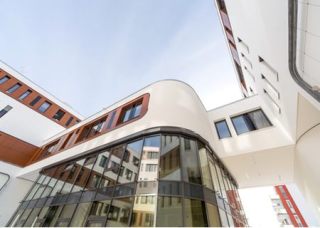Sep 30 2015
Buildings are responsible for 40% of our energy consumption. With this in mind the European research project DIRECTION aims to demonstrate that very low energy buildings can be implemented in practice.
 dire
dire
But what does it take to turn an energy-efficient new building project into a successful business?
Knowledge that energy efficiency saves money is widespread, but energy issues remain a low priority for consumers and firms. “For a product to be attractive it either has to fill a need (e.g. efficient cars allow fuel savings) or give an image of quality (e.g. electric cars give an image of sustainability): in the case of buildings, neither the cost of energy nor the economic pressure of being inefficient is very high,” says Inés Alomar, a freelance energy consultant based in Barcelona (Spain).
Typically it is client demand that shifts markets: “What we really need is a drive for energy efficiency from those who buy or rent, which will force the market to implement it,” remarks Oliver Vietgen, an architect representing Facit GmbH & Co. KG, which is one of the partners of the EU project DIRECTION.
Vietgen's team implemented energy saving measures in the Munich Nu-Office, which received an international Platinum LEED certificate in Green Building in 2013. It is considered by many as one of the most sustainable new office buildings in the world.
A client with no expertise who wants an energy-efficient building might have a hard time finding out what the best solutions are, where to get financing or what business model to look at. “There is certainly a big gap in bringing the knowledge to what owners actually need,” affirms John Morrissey, expert in sustainability in the built environment at Liverpool John Moores University, in England.
To overcome this barrier Alomar suggests the need for 'energy advocates', i.e. “people working close to the companies that build, buy, rent, who can explain to them what they can achieve and how.” Energy advocates, assures Alomar, also help overcome the financial barriers, such as those faced by Vietgen's team in the sale of the DIRECTION's Nu-Office show-case and solved through self-financing: “Although investment funds for energy efficiency do exist, they are often unknown to promoters.”
Morrissey suggests one reason for this: “The financial institutions are not keen on making these low interest options widespread because in the short-term they are not profit generators for them.”
Vietgen considers that an established system for calculating building energy performance would help solve a problem they faced in trying to convince possible buyers [of the Nu-Office] of the benefits of energy efficiency: “We were not able to give proof of future consumption levels because the building had only been running for half a year. They were worried about the risk of energy prices rising, so we had to sell at a lower price.”
Morrissey agrees that a standard method for comparing buildings would be useful, while Alomar says: “What is missing is that the design teams directing the works sign the future energy consumption as a guarantee”.
'Split incentives' are another major challenge on the path towards energy efficiency: owners don’t invest because it’s the tenants who pay the energy bills and tenants don’t invest in properties they don’t own.
Energy Service Companies (ESCOs), according to Morrissey, help remove this obstacle. “They are less risk-adverse than owners and they can deliver the benefits that an investment can provide for the occupants.”
ESCOs can also contribute to removing up-front investment, an obstacle overcome through successful practices in other sectors, like cars: “If a promoter, instead of selling the building, exploits and rents it out for an extended period -at the end of which the client can eventually become the owner- the sustainability risk gets distributed more widely,” says Alomar.
It all goes back to what moves the market, i.e. demand. “What makes this model sustainable is clients’ demand for energy efficiency, as well as a long-term leasing that can guarantee a lasting business model,” adds Alomar.
According to experts, keys for success include having clients before constructing, counting on strong stakeholders and energy efficiency managers right from the start, and adopting a long-term view in decision-making regarding sustainability.